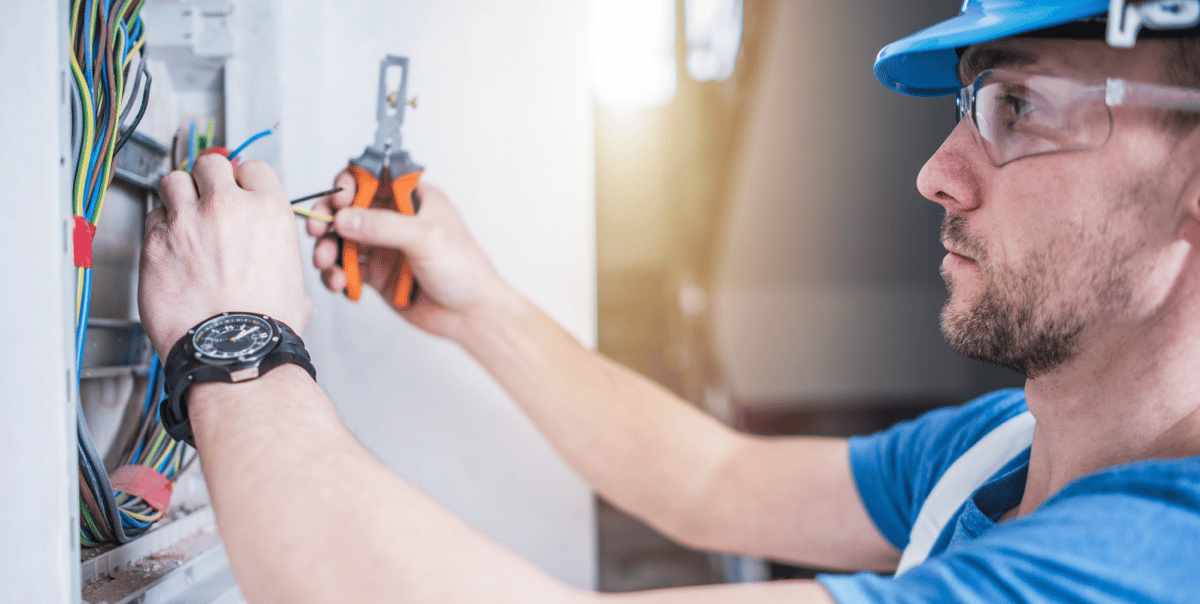February 18, 2022
What Net Zero Means for Electrical Contractors

4 Min. Read
Most of the world’s governments made serious commitments to net-zero emissions amid the worldwide pandemic. Almost 20 months into it, we have already seen enormous changes and growth in the renewable energy industry. The trends show no signs of stopping, either. For electricians and electrical contractors, the move toward a net-zero-emissions world offers a big opportunity. Your skills will be critical to drive the needed infrastructure changes forward.
Understanding net zero
Greenhouse gases emitted by vehicles, manufacturing, power stations and other heavy users of fossil fuels need to be reduced greatly. To achieve this goal, countries around the globe have committed to move to “net zero emissions.” Net zero aims to offset any new greenhouse emissions with efforts to remove those already in the atmosphere.
Curbing the continued growth of our collective carbon footprint, which is the amount of greenhouse gases we produce, is a necessary step toward addressing climate change. The pollutants released into the atmosphere are already affecting life on Earth. For instance, they are causing more harmful weather events, endangering countless species and displacing millions of people.
Positive signs in the US
Our ability to reach net zero relies heavily on infrastructure changes, sustainable energy, electrification and more. We have made great progress since setting benchmarks in 2005, achieving a 40% reduction in 15 years. As of 2019, the reduction level was 33%, so we could erase the subsequent 7% decrease during the pandemic if we resume all pre-COVID-19 activities, particularly those using fossil fuels.
Progress in sustainable energy generation has helped. Wind and solar generate 13 times more power than we predicted back in 2005. Further, tax credits and favorable government policies have boosted demand for renewable energy. However, capital cost reductions helped a lot.
In addition, the federal Infrastructure Investment and Jobs Act features initiatives to encourage EV production and sales. It also builds out a national network of charging stations. Adding that network, plus home and office charging spots, requires EV service providers, skilled electrical technicians and electrical contractors.
Enabling a sustainable future
Renewable energy generation, EVs and efficient power storage and usage tools are enabling the shift to a green, net-zero future. Humanity needs your talents to speed up the transition and build a sustainable culture.
Here are some of the staples of efficient, sustainable electrical design. To install many of them, homeowners and business owners will need electrical technicians.
- Smart LED lighting and fixtures in homes, retail outlets, workplaces, etc. Conventional light bulbs work with the flip of a switch. Yes, people added timers and dimmers, but they were still pretty limited. By contrast, smart lighting with LED fixtures gives people control via smartphone, computer or gadgets like Amazon Alexa. Being able to dim lights, control usage and employ LED light bulbs saves energy. Smart LED light bulbs last longer and use about 90% less energy to produce the same amount of light.
- Updated wiring, smart panels and smart plugs. Adding appliances (or an EV charger) can require upgrading the electrical panel. Energy-efficient changes in demand now involve smart panels and smart plugs. These devices allow people to schedule the use of appliances remotely throughout the day. This helps ensure they are not wasting energy when not in use even though they are plugged in.
- Energy-efficient devices. For decades, the government-backed ENERGY STAR program encouraged people to buy energy-efficient appliances. As a result, it reportedly saved 5 trillion kilowatt-hours of electricity and over $450 billion in energy costs. It also helped avoid the release of more greenhouse gases. Now, a push has begun to upgrade appliances so that they avoid all use of fossil fuels. For example, Vancouver and Quebec recently restricted heating that uses fossil fuels in new homes. Estimates show space and water heating results in 85% of residential gas and 68% of commercial greenhouse gas emissions in Canada. Governments in other areas have taken similar steps. Electric heating, stoves and other net-zero-friendly devices are replacing older gas-burning ones, especially in new buildings.
- Connectivity and data connections. Public electric vehicle charging stations will rely on robust, low-bandwidth cellular data connections to process payments, monitor power usage and alert management when repairs are needed. While many payment systems use 3G and 4G, experts say the charging infrastructure will need 5G to run efficiently.
- EV-friendly garages. EV charging stations and electrical upgrades for their installation will be in high demand in the coming years. The Edison Electrical Institute (EEI) estimates we will need over 100,000 fast-charging EV ports for the 22 million EVs we expect to travel U.S. roads by 2030.
Joining the net-zero effort
What’s in it for electricians and electrical contractors? The need for talented electrical technicians is growing as more people buy EVs, the charging infrastructure is built and the world moves to net zero. If you want to help build the future, join the Qmerit team of electrical contractors
Qmerit is a leader in electrification services with a network of technicians throughout the U.S. and Canada and partnerships with most EV manufacturers. With our Certified Solutions Partner (CSP) program, you can take advantage of the lucrative EV charger station installations market and other efforts to reduce emissions. Our program provides a pipeline of approved clients who need your services.
To find out more about electrical contractor opportunities, contact Qmerit at (888) 272-0090 or email us at info@qmerit.com.
